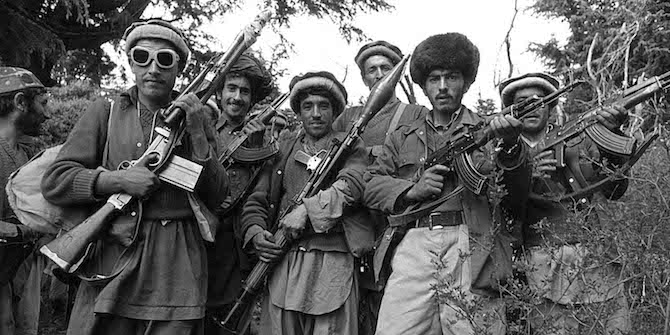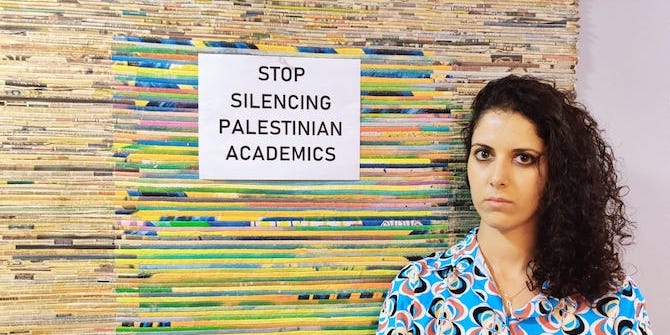by Alainna Liloia
 Shortlisted for the 2019 Palestine Book Award, Islah Jad’s Palestinian Women’s Activism: Nationalism, Secularism, Islamism provides a much-needed historical analysis of Palestinian women’s activism and makes important contributions to the scholarly study of Palestinian resistance, and more broadly, to scholarship on the relationship between gender, nationalism and Islamism.
Shortlisted for the 2019 Palestine Book Award, Islah Jad’s Palestinian Women’s Activism: Nationalism, Secularism, Islamism provides a much-needed historical analysis of Palestinian women’s activism and makes important contributions to the scholarly study of Palestinian resistance, and more broadly, to scholarship on the relationship between gender, nationalism and Islamism.
Jad’s thoughtful examination of women’s roles in the Palestinian nationalist struggle and the complex relationship between ‘feminist’ and ‘nationalist’ concerns in this context contributes to an often-overlooked but growing area of research. Moreover, her analysis of Palestinian women’s participation in Islamist movements, particularly Hamas, fills a gap in the current literature on Palestinian resistance, and challenges the tendency of scholarship on women’s activism in the Middle East to exclude the participation of women in Islamist movements or reduce it to ‘false consciousness’ or blind adherence to ‘tradition’. Jad moves beyond the dichotomies of religious/secular and traditional/modern in her conceptualisation of Islamist and secular nationalist movements and women’s roles within them and highlights the multiplicity of historical factors that have shaped Palestinian women’s activism.
Jad relies on the methods of historical analysis and her own ethnographic data to understand the nature of women’s participation in various forms of Palestinian resistance and to conceptualise their relationship to multiple forms of nationalism, secularism and Islamism. Tracing Palestinian women’s activism from the 1930s through the Second Intifada, Jad unearths important trends in women’s engagement in resistance and their participation in larger nationalist struggles.
From the 1930s onward, Palestinian women’s activism has often been dominated by upper-class, urban elites, who have failed to include lower-class, rural, and refugee women in their resistance efforts, viewing them solely as recipients of their ‘charity’ (69). While grassroots organising during what Jad calls the ‘revolution’ era (1974–82) resulted in greater solidarity between women of all classes and gave women an outlet to push for changes to gender norms, the Oslo Agreement and emergence of the Palestinian Authority in 1994 ‘brought the elite urban professionals back to the fore at the expense of the rural and refugee leadership’ and granted power to ‘new feminist elites working from within civil society in NGOs or from within the PA apparatuses’ (70, 2).
The marginalisation of lower-class rural and refugee women within secular nationalist movements is one of the factors Jad identifies as contributing to the choice of many Palestinian women, particularly among the lower and middle classes, to participate in and identify with Islamist movements. Jad highlights the flexibility and changing nature of Islamists’ gender ideologies, demonstrating how Hamas’ male-dominated leadership shifted their rhetoric towards greater inclusion of women to garner popular support and to better compete with secular nationalist movements. She argues that Hamas provided an alternative to what many viewed as a failed secular nationalist movement by fusing Islam and Palestinian nationalism and identifying the movement with ‘the struggle to gain Palestinian national rights’ (83).
In tracing the changing gender ideology of Hamas, Jad draws attention to the contradictory expectations imposed upon women, who were required to fulfil the role of ‘model mothers and obedient wives’ as well as that of ‘model political activists’, the former demanding women’s performance of traditional domestic responsibilities and the latter demanding women’s educational development and active participation in political resistance (110). As Jad rightly points out, this is not unique to Hamas or Islamist movements, but is a common facet of movements that link nationalist ideals to gender roles. As is often the case, both secular and Islamist movements relied on gendered symbols to articulate their aims, representing Palestinian women as symbols of tradition and purity, or conversely, as markers of modernity. However, this did not prevent the women of Hamas from ‘working to change the prevailing gender vision to make a space for themselves’ within the movement (134).
In her concluding assessment of Palestinian women’s movements, Jad argues, ‘The prospect that all the various elements of the Palestinian women’s movements could find common ground from which to pursue a unified struggle against the Occupation was unfulfilled’ (169). As Jad demonstrates, the divisions between various nationalist groups and women’s groups prevented unification and were intensified by the increased influence of NGOs and international paradigms on development and women’s equality.
In an epilogue analysing Palestinian women’s resistance since 2004, Jad argues that Islamist women have leveraged international development and women’s rights frames to their advantage, whereas such frames ‘are exacerbating the weakness of the national Palestinian women’s movement’ (186). Jad’s work calls into question the effectiveness of international human rights and women’s rights paradigms in advancing the Palestinian cause and addressing the material and ideological concerns of Palestinian women from varied backgrounds and ideological leanings. In addition, it raises important questions about the future of the Palestinian women’s movement and highlights the need for solidarity among women of varied social classes for Palestinian women’s advancement and the larger Palestinian struggle against occupation.
Jad’s book brings new historical and ethnographic material to light and offers important insights on the complex social, religious and political factors that have shaped Palestinian women’s resistance and their engagement with nationalist ideologies and movements. Most significantly, her work offers a necessary look into women’s participation in Islamist movements, often unacknowledged by Western analysts and scholars. As Palestinian resistance efforts continue to shift in response to a variety of social and political factors, Jad’s book provides a foundation for understanding and analysing women’s roles within resistance movements and the gender ideologies underpinning them.






